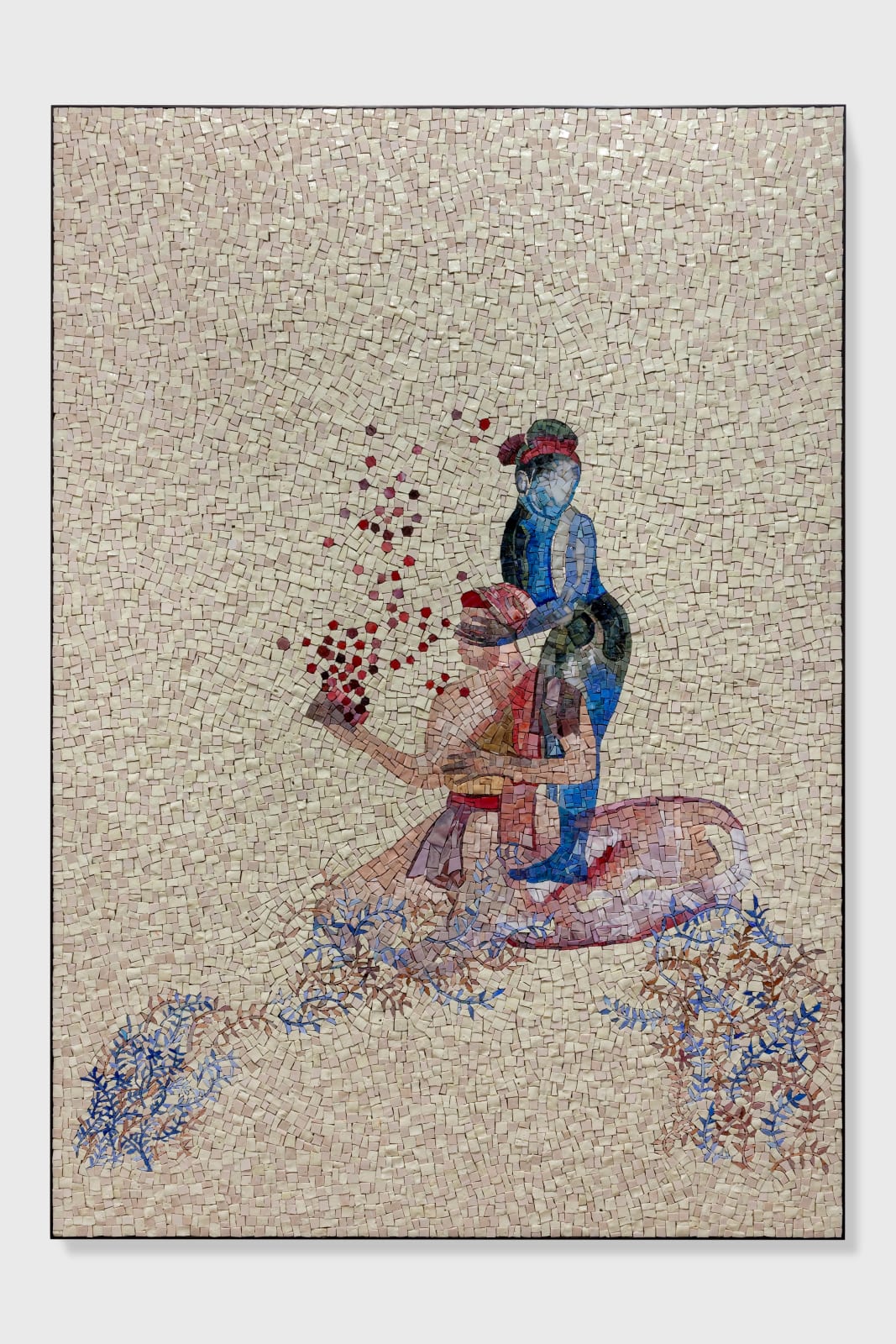







Shahzia Sikander
Double Sight, 2018
Glass mosaic with patinated brass frame
Approx mosaic: 159.1 x 111 cm
Approx mosaic: 62 5/8 x 43 3/4 in
Approx. framed: 160.3 x 112.2 cm
Approx. framed: 63 1/8 x 44 3/16 in
Approx mosaic: 62 5/8 x 43 3/4 in
Approx. framed: 160.3 x 112.2 cm
Approx. framed: 63 1/8 x 44 3/16 in
Edition of 4 plus 1 AP
Copyright The Artist
Further images
-
(View a larger image of thumbnail 1
)

-
(View a larger image of thumbnail 2
)

-
(View a larger image of thumbnail 3
)

-
(View a larger image of thumbnail 4
)

-
(View a larger image of thumbnail 5
)

-
(View a larger image of thumbnail 6
)

-
(View a larger image of thumbnail 7
)

-
(View a larger image of thumbnail 8
)

History and story-telling feature prominently exist in Sikander’s work. They question issues around redaction, perception of authority and making of national narratives. Double Sight is a pun on double vision....
History and story-telling feature prominently exist in Sikander’s work. They question issues around redaction, perception of authority and making of national narratives.
Double Sight is a pun on double vision. Former implying unusual clarity of vision and latter impaired vision. The two protagonists in Double Sight are Akbar and Krishna, both characters are mythic in scope and embody several archetypes within them. Akbar the Muslim Mughal ruler of India is historically seen as the king and patron of cultural plurality. Krishna the Hindu deity has several archetypes, the hero, the god child, lover, trickster to name a few.
Suggesting a playful and congenial interface between the two characters the work emphasizes the syncretic nature of cultural traditions in the subcontinent. South Asian identity with its diverse history, linguistic and racial diversity and multiplicity of faith and politics is often a site of paradoxes and polarities and hierarchies of power. Sikander’s interest in reexamining history is to open up the discourse of ownership and to transform motifs in order to cultivate new associations for trenchant historical symbols and this way the forms, elements, motifs, the stories can service more than one vantage point
Double Sight is a pun on double vision. Former implying unusual clarity of vision and latter impaired vision. The two protagonists in Double Sight are Akbar and Krishna, both characters are mythic in scope and embody several archetypes within them. Akbar the Muslim Mughal ruler of India is historically seen as the king and patron of cultural plurality. Krishna the Hindu deity has several archetypes, the hero, the god child, lover, trickster to name a few.
Suggesting a playful and congenial interface between the two characters the work emphasizes the syncretic nature of cultural traditions in the subcontinent. South Asian identity with its diverse history, linguistic and racial diversity and multiplicity of faith and politics is often a site of paradoxes and polarities and hierarchies of power. Sikander’s interest in reexamining history is to open up the discourse of ownership and to transform motifs in order to cultivate new associations for trenchant historical symbols and this way the forms, elements, motifs, the stories can service more than one vantage point